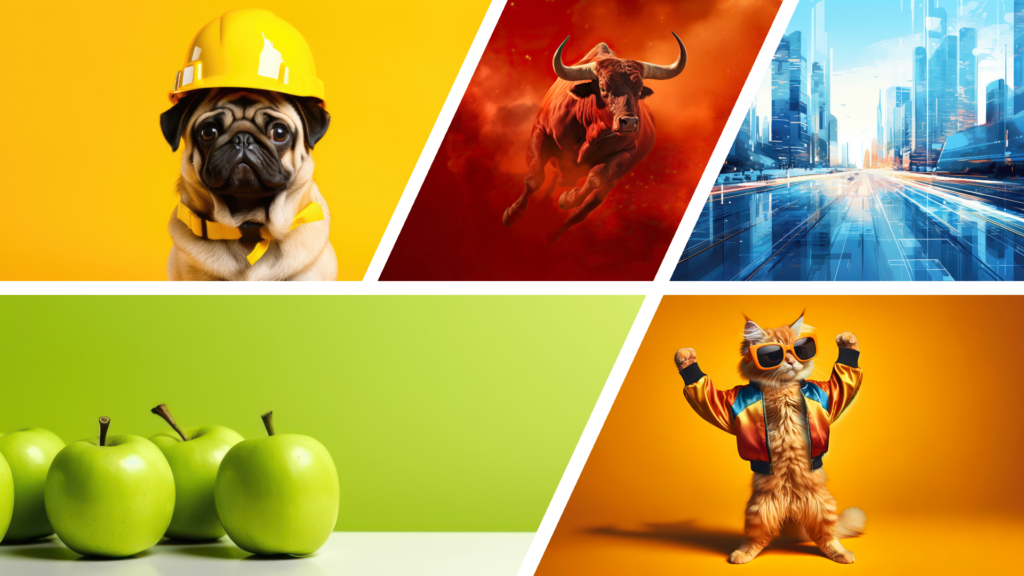Building Your Brand: Colors
Brand colors play a critical role in forming an emotional connection with consumers, enhancing brand recognition, and non-verbally communicating a brand’s identity and essence.
Below is an extensive list that highlights different colors and their significance for a brand’s identity.
Primary Colors

Let’s delve into the meaning and impact of primary and secondary colors.
Green: Associated with nature, health, and sustainability. Brands focusing on organic products, environmental friendliness, or wellness often use green to communicate their connection to nature and commitment to eco-friendly practices.
Blue: Often conveys trust, security, and reliability. It’s frequently used by financial institutions and technology companies to project stability and trustworthiness.
Red: Symbolizes excitement, passion, and energy. Brands use red to grab attention and evoke a sense of urgency or importance. It’s common in the food industry to stimulate appetite and in the automotive sector to denote speed and dynamism.
Yellow: Conveys optimism, happiness, and warmth. It’s an attention-grabbing color used to create a sense of cheerfulness and approachability. Brands use yellow to project a friendly, accessible image.
Black: Represents sophistication, luxury, and elegance. High-end brands, especially in the fashion and automotive industries, use black to convey a sense of exclusivity and premium quality.
Pastel Colors

Pastel colors typically convey softness, calmness, and a soothing aesthetic. They are often used to project a gentle, approachable, and friendly brand image. Common pastel colors and their connotations include:
Pastel Yellow: Evokes a sense of lightness, happiness, and soft energy. Used in children’s products, spring-themed promotions, and light-hearted brands.
Pastel Pink: Conveys femininity, warmth, and nurture. It’s often used in brands related to baby products, bakeries, and beauty products.
Pastel Blue: Suggests tranquility and softness. Ideal for healthcare, baby products, and wellness brands.
Pastel Green: Associated with healing, freshness, and eco-friendliness. Common in organic and natural health brands.
Pastel Purple: Implies creativity, spirituality, and gentleness. Often seen in beauty, artistic, and mystical-themed brands.
Vibrant Colors

Vibrant colors are energetic and bold, often used to grab attention and convey excitement and vitality. They project a lively and youthful brand personality.
Vibrant Yellow: Conveys optimism, clarity, and alertness. Suitable for brands that want to appear energetic and attention-grabbing, like advertising and safety-related products.
Vibrant Red: Signifies energy, passion, and action. Ideal for brands wanting to appear dynamic and bold, like fast food chains and sports companies.
Vibrant Blue: Exudes confidence, strength, and reliability. Often seen in technology, corporate, and finance sectors.
Vibrant Green: Denotes growth, vitality, and freshness. Used by brands promoting health, outdoor activities, and sustainable initiatives.
Vibrant Orange: Represents enthusiasm, creativity, and playfulness. Commonly used in entertainment, children’s products, and creative agencies.
Choosing Brand Colors
Every color, from the most vibrant to the most soothing, carries unique meanings and associations that become integral to your brand’s identity. Primary colors such as red, blue, and yellow are bold and clear, grabbing attention and exuding confidence. Pastels, with their soft and airy appeal, can create a gentle and welcoming environment. Vibrant colors, with their high energy and brightness, are excellent for creating an engaging and lively brand presence. As you build your brand, ensure the colors you choose capture your brand’s essence and appeal to your target audience
Building Your Brand Identity with Talawa AI
Talawa AI provides brand-agency style services in a collaborative AI-powered platform that allows businesses to self-steward their brand from logo creation to identifying target customers. Talawa’s AI assistant guides you through the branding journey, which begins with the creation of a complete brand identity: name, logo, colors, typography, imagery, brand voice and tone, brand story, tagline and target audience and enables businesses to proactively shape the brand to align with evolving goals.